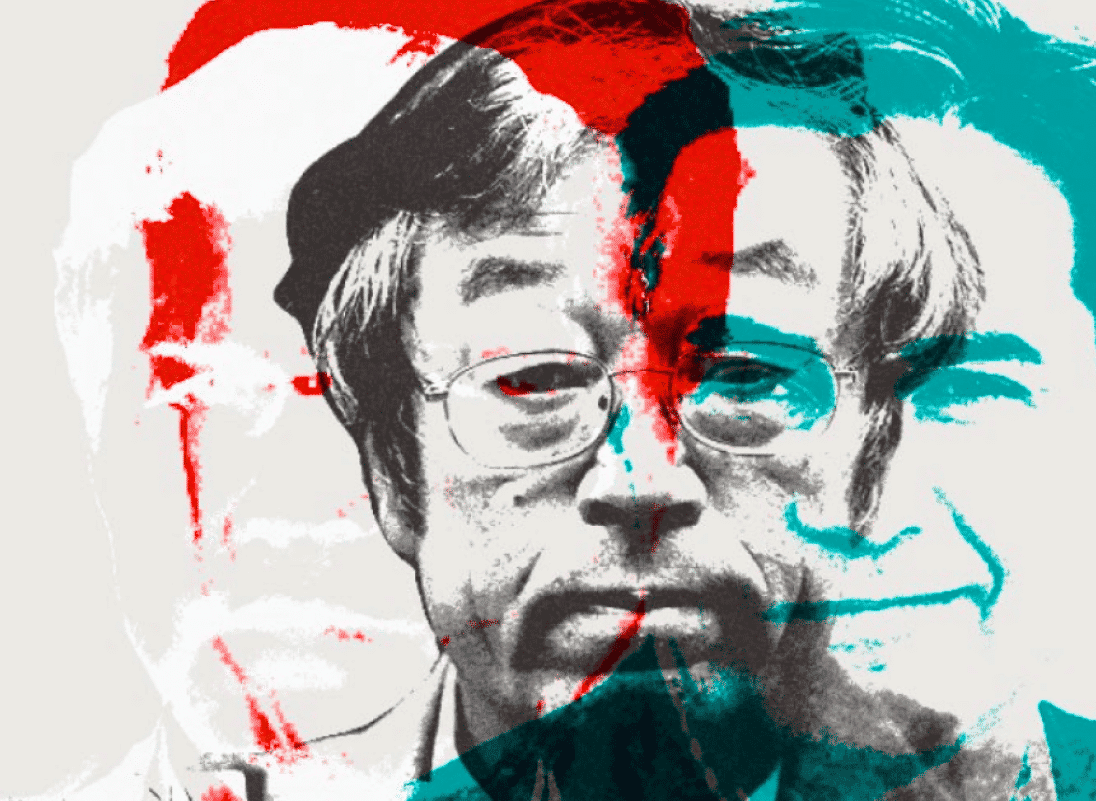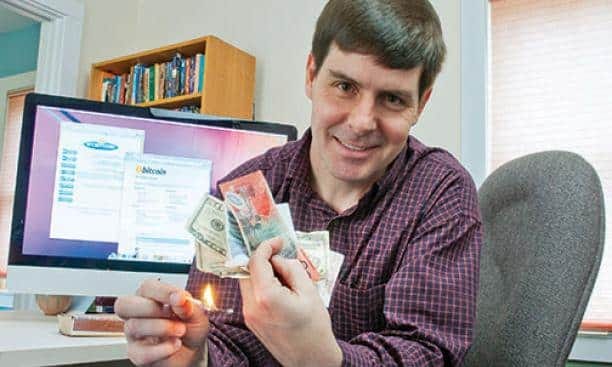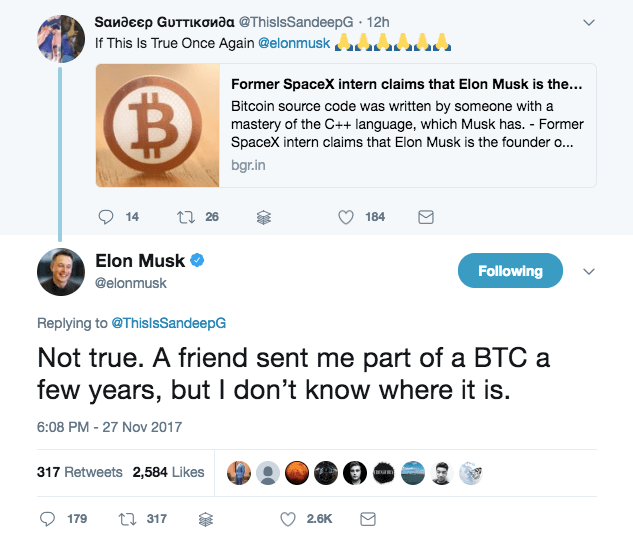Who Is Satoshi Nakamoto? The Man, the Myth, the Legend
 Unraveling the identity of Satoshi Nakamoto is a complex and fascinating journey that involves examining clues, analyzing evidence, and delving into theories. From computer scientists to mathematicians, many have attempted to piece together the puzzle, but to this day, the true identity of Satoshi Nakamoto remains shrouded in mystery. In this article, we will explore the various theories and potential candidates that have emerged in the quest to uncover the person behind the pseudonym.
Unraveling the identity of Satoshi Nakamoto is a complex and fascinating journey that involves examining clues, analyzing evidence, and delving into theories. From computer scientists to mathematicians, many have attempted to piece together the puzzle, but to this day, the true identity of Satoshi Nakamoto remains shrouded in mystery. In this article, we will explore the various theories and potential candidates that have emerged in the quest to uncover the person behind the pseudonym.
Hello, I’m Zifa. As a long-time crypto enthusiast, I’ve always been fascinated by the enigma of Satoshi Nakamoto. Today, I’ve compiled all the insights and information we have about this mysterious figure into one comprehensive article. Let’s dive in!
Who Is the Real Creator of Bitcoin?
The real creator of Bitcoin is a pseudonymous person or group of people known as Satoshi Nakamoto. Nakamoto first introduced the concept of Bitcoin in a white paper on a cryptography mailing list in 2008 and then released the software implementation of Bitcoin in January 2009.
Since that day, Bitcoin’s popularity has only surged. Initially a niche concept, its decentralized nature soon captured global interest, evident in the rising searches for “buy Bitcoin.”
However, the real identity of Satoshi Nakamoto remains unknown, and there has been much speculation and investigation to uncover their true identity. Despite numerous claims and theories, the real creator of Bitcoin has never been definitively identified.
Why Was Bitcoin Created?
Bitcoin emerged as an answer to the limitations and vulnerabilities seen in traditional financial systems. It aimed to provide a decentralized financial platform, giving individuals more autonomy over their finances.
The birth of Bitcoin is closely tied to the 2008 financial crisis, which highlighted the weaknesses in centralized financial institutions. Against this backdrop, Bitcoin promised an alternative free from central authority interference. The first mined Bitcoin block, aka the Bitcoin genesis block, was created on January 3, 2009.
The first mined Bitcoin block, aka the Bitcoin genesis block, was created on January 3, 2009.
A defining feature of Bitcoin is its open-source design, ensuring it’s accessible to anyone keen on joining or contributing. This design promotes transparency and security. The very first block of Bitcoin, known as the genesis block, was mined by Satoshi on January 3, 2009. This block, bearing a message about the financial crisis, underscores Bitcoin’s foundational ethos.
Who Is Satoshi Nakamoto?
Satoshi Nakamoto, the name behind Bitcoin’s creation, remains one of the most captivating riddles in the world of cryptocurrency. This pseudonymous identity could belong to an individual or a group. Over time, many have been speculated to be the real Satoshi, including notable names like Dorian Nakamoto, Hal Finney, Craig Wright, Nick Szabo, and Wei Dai.
While Satoshi’s true identity remains a puzzle, their revolutionary Bitcoin white paper and the cryptocurrency’s subsequent development have significantly shaped the digital payment landscape.
Why is Satoshi Nakamoto unknown?
Satoshi Nakamoto remains unknown for several reasons. Firstly, Nakamoto intentionally chose to remain anonymous to protect their privacy and avoid potential legal and regulatory issues.
By keeping their true identity a secret, Nakamoto was able to maintain a level of control over the Bitcoin project without being subject to personal scrutiny or interference. Additionally, the decentralized nature of Bitcoin further contributes to Nakamoto’s anonymity, as there is no central authority or individual responsible for overseeing the cryptocurrency.
The absence of a known figurehead also aligns with the principles of decentralization and autonomy that Bitcoin was designed to embody. Overall, Nakamoto’s decision to remain unknown has allowed Bitcoin to thrive as a global phenomenon, free from the influence of any single individual or institution.
What Do We Know about Satoshi Nakamoto?
The crypto community widely acknowledges Satoshi Nakamoto as the brain behind Bitcoin. In 2008, a white paper titled “Bitcoin: A Peer-to-Peer Electronic Cash System” was published, setting the stage for modern cryptocurrencies.
Beyond the white paper, Satoshi actively engaged with the early Bitcoin community, showcasing their expertise in cryptography, economics, and computer science. Their writings, bearing hints of British English, have sparked speculations about their origin. Some have even delved into linguistic analyses to decode Satoshi’s identity. Yet, the real Satoshi remains elusive, turning their anonymity into a legendary tale in the crypto world.
Regardless of the mystery, Satoshi’s contributions to cryptocurrency are monumental. Bitcoin and the ensuing blockchain technology have transformed digital payments, introducing innovations like smart contracts and a genuinely decentralized financial system.
Satoshi Nakamoto: Truths and Mysteries
The identity of Satoshi Nakamoto, the genius behind Bitcoin, remains one of the most tantalizing mysteries in the cryptocurrency world. Let’s dive into the known facts and enduring enigmas about this elusive figure and their indelible mark on digital payments.
A Master of Code
Satoshi Nakamoto’s coding brilliance is undeniable. Their creation, Bitcoin, boasts impeccable code that has stood the test of time, remaining impervious to hacking attempts. Dan Kaminsky, a respected internet security researcher, even tried and failed to find vulnerabilities, underscoring the mastery of Nakamoto’s work.
With an impressive 31,000 lines of code, Satoshi’s intricate programming has become the bedrock of Bitcoin, the world’s leading cryptocurrency. Their unparalleled coding skills reflect a deep grasp of cryptographic protocols and the vision to craft an entire decentralized currency system.
In the tech realm, Satoshi Nakamoto shines as a beacon, their impeccable code cementing their legacy as a transformative figure in digital payments.
A Linguistic Enigma
Beyond their technical prowess, Satoshi’s writings hint at a fluency in British English. This is evident in their code, the seminal Bitcoin white paper, and even in email exchanges with peers like Hal Finney.
Analyses of Nakamoto’s writings reveal distinct British English traits, showcasing meticulous attention to linguistic detail. The clarity and precision in the Bitcoin white paper further highlight their ability to distill complex ideas into accessible prose.
Nakamoto’s linguistic finesse not only adds to the intrigue surrounding their identity but also underscores their comprehensive skills, from coding to clear communication.
A Collective Identity?
There’s growing speculation that Satoshi Nakamoto might not be a single person but a collective of coders. The vast expertise required to develop Bitcoin and its foundational blockchain technology fuels this theory.
Nakamoto’s silence since 2011 adds to this speculation. Despite being the force behind the world’s premier cryptocurrency, they’ve remained conspicuously absent, leading some to wonder if “Satoshi” was a group that chose to step back or maintain collective anonymity.
While many have claimed to be Nakamoto, from Dorian Nakamoto to Craig Wright, none have conclusively proven their claim.
Beyond Gender Norms
Satoshi Nakamoto’s gender remains another layer of the enigma. While “Satoshi” is a traditionally male Japanese name, there’s speculation that it could be a pseudonym for a female coder. This theory challenges gender norms in the tech industry and celebrates the potential contributions of women in a field often skewed towards men.
The notion of a female Satoshi has inspired many in the tech community, emphasizing the importance of recognizing and championing women’s achievements. Regardless of gender, Satoshi Nakamoto’s creation, Bitcoin, has forever altered the digital currency landscape. Yet, their gender, like many aspects of their identity, remains a captivating mystery.
History of Satoshi Nakamoto
Let’s get back to 2008. On October 31, Nakamoto published an article ‘Bitcoin: A Peer-to-Peer Electronic Cash’ in which he introduced a new digital currency and a decentralized payment system that didn’t require third-party interference. Satoshi Nakamoto was human to resolve a double-spending problem.
At the beginning of 2009, Nakamoto launched the Bitcoin Network with the first mined BTC block (a genesis block/block number 0). The mining reward was 50 BTC. In November 2009, Satoshi created a forum dedicated to Bitcoin technology and the cryptocurrency that is now known as bitcointalk.org. The first BTC transaction took place within the forum when a software developer Laszlo Hanyecz offered 10,000 BTC for one pizza. Three days later, it was arranged to purchase two pizzas.
In November 2009, Satoshi created a forum dedicated to Bitcoin technology and the cryptocurrency that is now known as bitcointalk.org. The first BTC transaction took place within the forum when a software developer Laszlo Hanyecz offered 10,000 BTC for one pizza. Three days later, it was arranged to purchase two pizzas.
Nakamoto has been working tightly with other developers during 2010. They all were supposed to develop and maintain the Bitcoin network. However, by the end of that year, he had suddenly stopped working on the project. He gave keys and codes to a software developer Gavin Andresen, conveyed domains to the community members and left.
In 2011, while communicating with a developer Mike Hearn, Satoshi Nakamoto stressed:
“I’ve moved on to other things. It’s in good hands with Gavin and everyone.”
And then he disappeared as suddenly as he burst into the digital space in 2008.
Who is Hiding Behind Satoshi’s Mask?
Let’s go through the many theories and speculations surrounding the potential candidates and delve into their stories.
Dorian Nakamoto: The Unintended Suspect
 Dorian Satoshi Nakamoto is a Japanese-American physicist who became unintentionally caught up in the riddle of Bitcoin’s creator in 2014. In an article published by Newsweek magazine, Nakamoto was identified as the enigmatic Satoshi Nakamoto. However, he vehemently denied any involvement with the creation of Bitcoin.
Dorian Satoshi Nakamoto is a Japanese-American physicist who became unintentionally caught up in the riddle of Bitcoin’s creator in 2014. In an article published by Newsweek magazine, Nakamoto was identified as the enigmatic Satoshi Nakamoto. However, he vehemently denied any involvement with the creation of Bitcoin.
The crypto community quickly rallied to support Nakamoto, recognizing the potential harm that could be done by falsely outing someone as the creator of the world’s most popular cryptocurrency. Despite being unemployed and without internet access, Nakamoto found himself thrust into the spotlight, facing intense media scrutiny.
In response to the Newsweek article, Nakamoto launched a fundraising campaign to help him fight against the misidentification and defend his privacy. The campaign was successful, with the crypto community donating thousands of dollars to support him.
“I did not create, invent or otherwise work on Bitcoin. I unconditionally deny the Newsweek report. […] Newsweek’s false report has been the source of a great deal of confusion and stress for myself, my 93-year old mother, my siblings, and their families”.
Ultimately, it was discovered that Dorian Nakamoto was not the real Satoshi Nakamoto. The true identity of Bitcoin’s creator remains unknown to this day. The case of Dorian Nakamoto serves as a cautionary tale about the importance of verifying information before making claims, especially in the fast-paced world of cryptocurrency.
Hal Finney: The Cryptographic Pioneer
Hal Finney, a renowned computer scientist and cryptographer, played a crucial role in the early development of Bitcoin and had a close connection to Satoshi Nakamoto. He is considered one of the pioneers in the cryptocurrency space. Finney was the first person to download the Bitcoin software after its release by Nakamoto in 2009. He became the first person to mine bitcoins, contributing to the initial growth of the network. Finney’s involvement in testing and providing feedback on the software was instrumental in refining the early versions of Bitcoin.
Finney was the first person to download the Bitcoin software after its release by Nakamoto in 2009. He became the first person to mine bitcoins, contributing to the initial growth of the network. Finney’s involvement in testing and providing feedback on the software was instrumental in refining the early versions of Bitcoin.
Furthermore, Finney had direct correspondence with Nakamoto, engaging in discussions and providing feedback on the development of the cryptocurrency. Their exchanges highlighted a level of trust and collaboration between the two.
When Newsweek published an article claiming that Dorian Nakamoto was the real Satoshi Nakamoto, Finney stepped forward to share evidence debunking the claim. In a blog post, Finney presented verifiable proof that he had received the first-ever Bitcoin transaction from Nakamoto.
Unfortunately, Finney passed away in 2014, but his contributions to Bitcoin and his correspondence with Nakamoto provide valuable insight into the early days of the cryptocurrency’s development. While the real identity of Nakamoto remains unknown, Finney’s involvement stands as a testament to his weight and the intrigue surrounding the creation of Bitcoin.
Craig Wright: The Controversial Claimant
Craig Wright is a controversial figure who gained attention by claiming to be the elusive Satoshi Nakamoto. Wright initially provided what he claimed to be compelling evidence, including blog posts and cryptographic evidence, to support his assertion. However, his claim quickly came under scrutiny. Various experts within the cryptocurrency space analyzed Wright’s evidence and found it to be inconsistent and unconvincing. Multiple discrepancies were discovered, including backdated blog posts and manipulated cryptographic signatures. These findings cast doubt on Wright’s true identity as Satoshi Nakamoto.
Various experts within the cryptocurrency space analyzed Wright’s evidence and found it to be inconsistent and unconvincing. Multiple discrepancies were discovered, including backdated blog posts and manipulated cryptographic signatures. These findings cast doubt on Wright’s true identity as Satoshi Nakamoto.
In addition to the scrutiny from the cryptocurrency community, Wright faced legal challenges regarding his claims. He filed libel lawsuits against individuals and organizations who publicly disagreed with his assertion. Nonetheless, these lawsuits did not go in his favor — he was unable to provide substantial evidence in the courtroom to support his claim.
Courts ruled against Wright, and he was ordered to pay damages due to providing false evidence in his lawsuits. These legal actions further discredited his claim to be Satoshi Nakamoto.
While Wright continues to assert that he is the creator of Bitcoin, the overwhelming majority of the cryptocurrency community remains unconvinced. The true identity of Satoshi Nakamoto, the genius behind Bitcoin, remains an enigma.
Nick Szabo: The Digital Currency Visionary
Nick Szabo is a renowned computer scientist and cryptographer who has made major contributions to the development of Bitcoin. He is widely regarded as one of the leading figures in the field of cryptocurrency. Szabo’s most notable invention is the concept of smart contracts, which are self-executing contracts with the terms of the agreement directly written into code. This innovation laid the foundation for the development of decentralized applications and blockchain technology. His work on smart contracts revolutionized the way we think about digital agreements and greatly influenced the cryptocurrency ecosystem.
Szabo’s most notable invention is the concept of smart contracts, which are self-executing contracts with the terms of the agreement directly written into code. This innovation laid the foundation for the development of decentralized applications and blockchain technology. His work on smart contracts revolutionized the way we think about digital agreements and greatly influenced the cryptocurrency ecosystem.
In addition to smart contracts, Szabo proposed Bit Gold — an early form of virtual currency. Bit Gold incorporated many of the key features that would later be found in Bitcoin, such as decentralized consensus and proof-of-work mining. While Bit Gold was never implemented, it is considered a precursor to Bitcoin and played a crucial role in shaping the concept of decentralized currency.
One interesting aspect that has fueled speculation about Szabo’s true identity is the similarities in writing style between him and Satoshi Nakamoto. Having analyzed the white paper and other writings by Nakamoto, many experts found striking resemblances to Szabo’s previous works. Despite this compelling evidence, Szabo has repeatedly denied being Nakamoto.
Wei Dai: The B-Money Innovator
While Satoshi Nakamoto is widely recognized as the pseudonymous creator of Bitcoin, another renowned cryptographer and computer scientist worth mentioning is Wei Dai. His work has influenced the evolution of digital currency greatly. Dai’s most notable contribution is his groundbreaking theory of b-money, which he outlined in his 1998 essay. Similar to Bitcoin, b-money proposed a decentralized electronic currency system that would allow users to make online payments without a trusted central authority. This concept laid the foundation for the creation of Bitcoin and other cryptocurrencies, as it introduced the idea of a decentralized ledger and the use of cryptographic techniques for secure transactions.
Dai’s most notable contribution is his groundbreaking theory of b-money, which he outlined in his 1998 essay. Similar to Bitcoin, b-money proposed a decentralized electronic currency system that would allow users to make online payments without a trusted central authority. This concept laid the foundation for the creation of Bitcoin and other cryptocurrencies, as it introduced the idea of a decentralized ledger and the use of cryptographic techniques for secure transactions.
Interestingly, Dai’s theory shares several similarities with Bitcoin’s underlying principles. Both b-money and Bitcoin prioritize privacy, allowing users to remain pseudonymous, and rely on cryptographic methods to secure transactions. Furthermore, Dai’s concept of using computational work to create new currency units through “proof of work” is a fundamental aspect of Bitcoin mining.
Despite his valuable contributions, Wei Dai remains a mysterious figure, with little known about his personal life. He is known for his pseudonymous nature, rarely appearing in public or granting interviews. His expertise in cryptography and his theory of b-money, however, have solidified his place as one of the key figures in the development of decentralized digital currencies.
Gavin Andresen: The Bitcoin Torchbearer
As one of the early adopters, Andresen worked closely with Nakamoto in the early days of Bitcoin’s build-out. One of Andresen’s notable contributions was setting up the first Bitcoin faucet. This innovative system allowed users to receive small amounts of Bitcoin for free, encouraging widespread adoption and helping to distribute the cryptocurrency to a larger audience. The Bitcoin faucet became a popular platform for newcomers to practice trading and explore the world of digital payments.
One of Andresen’s notable contributions was setting up the first Bitcoin faucet. This innovative system allowed users to receive small amounts of Bitcoin for free, encouraging widespread adoption and helping to distribute the cryptocurrency to a larger audience. The Bitcoin faucet became a popular platform for newcomers to practice trading and explore the world of digital payments.
Andresen’s close relationship with Nakamoto is evident in the trust placed in him. Nakamoto named Andresen as his successor, handing over the reins of the Bitcoin project to him before eventually disappearing from the public eye. Andresen continued to contribute to the success of Bitcoin by leading the Bitcoin Core project, a community of developers working on improving the cryptocurrency’s software.
Despite his association with Nakamoto and his significant contributions to Bitcoin’s development, Andresen has reaffirmed that he is not Satoshi Nakamoto. He remains a respected figure in the cryptocurrency community and continues to advocate for the growth and adoption of decentralized currencies.
David Kleiman: The Cybersecurity Maestro
David Kleiman, a highly regarded cybersecurity expert and forensic analyst, has been linked to the mystery surrounding the true identity of Satoshi Nakamoto, the alleged inventor of Bitcoin. Kleiman’s connection to this enigma stems from his association with Craig Wright, an Australian entrepreneur who claimed to be Nakamoto in 2016, although his assertion has been widely disputed.
Kleiman’s expertise in cybersecurity and forensic analysis has led many to believe that he possessed the technical knowledge required to create a decentralized digital currency. However, the absence of conclusive proof and the debate surrounding Craig Wright’s claims have cast doubt on the extent of Kleiman’s involvement in the invention of Bitcoin.
While there is speculation surrounding Kleiman’s involvement in the creation of Bitcoin, his untimely death in 2013 has left many unanswered questions. Some believe that Kleiman may have played a significant role in the development of the world’s largest cryptocurrency, but without concrete evidence, his exact contributions remain uncertain.
Elon Musk
Elon Musk can be called a genius of our time. Hence, it is no surprise some people suspect that every brilliant technological idea belongs to him.
A former intern at SpaceX claimed Musk was Satoshi Nakamoto. Yet, there were no further proofs or any logical explanation. Addressing these accusations, Elon Musk tweeted simply: ‘Not true.’The question was resolved.
Paul Caulder Le Roux
Paul Caulder Le Roux is a name that has been associated with both criminal activities and speculation about his potential involvement in the creation of Bitcoin.
Le Roux was a former programmer who, at the height of his criminal career, became a notorious cartel boss. He amassed a criminal empire involved in drug and arms trafficking, money laundering, and even murder. Currently, Le Roux is serving a twenty-five-year prison sentence.
The association between Le Roux and Bitcoin came to light during the Kleiman v. Wright lawsuit. In this legal battle over the alleged theft of Bitcoin, it was claimed that Le Roux was Satoshi Nakamoto, the pseudonymous creator of Bitcoin. However, this theory remains unconfirmed and highly speculative.
Zooko Wilcox O’Hearn
Having worked in the field of digital currency since the early 2000s, Zooko has accumulated a deep understanding of the underlying technology. This knowledge puts him in a unique position to have been involved in the creation of Bitcoin. Additionally, his cypherpunk background further adds to the rumors.
Several factors contribute to Zooko being considered a likely candidate for being Satoshi Nakamoto. First, his technical skills and cryptography expertise align with the qualifications typically attributed to the Bitcoin creator. Moreover, Zooko’s association with other key figures in the cypherpunk community, such as Hal Finney and Nick Szabo, further bolsters the speculation.
However, it is essential to note that Zooko has never officially claimed to be Satoshi Nakamoto, and much remains uncertain about the true identity of the Bitcoin creator.
Martti Malmi
Martti Malmi is a Finnish computer scientist and software developer who played a crucial role in the success of Bitcoin. In the early days of Bitcoin, Malmi was responsible for writing its early documentation. This documentation served as a foundational resource for developers and users to understand the workings of the digital currency.
Additionally, Malmi is known for setting up the Bitcointalk forum, a widely recognized platform that became the go-to place for discussing Bitcoin-related topics. The forum facilitated communication and collaboration among the growing Bitcoin community, fostering the evolution and user adoption of Bitcoin.
Malmi’s contributions to Bitcoin also extended to coding and Linux support. He played a significant role in the development of Bitcoin v0.2, an important milestone in the evolution of the cryptocurrency. His technical expertise and programming skills were instrumental in enhancing Bitcoin’s functionality and reliability.
Adam Back
Adam Back is a prominent figure in the development of Bitcoin, known for his contributions as a cypherpunk and cryptographer. His expertise in cryptography and computer science helped shape the digital currency landscape. Back is particularly recognized for his creation of the Hashcash proof-of-work algorithm, which served as a fundamental building block of Bitcoin’s consensus mechanism.
Back’s work on Hashcash caught the attention of Satoshi Nakamoto, the mysterious individual or group credited with creating Bitcoin. Nakamoto corresponded with Back via emails, discussing various aspects of the cryptocurrency’s design and implementation. Their exchanges laid the groundwork for the development of Bitcoin and solidified Back’s position as an influential figure in the space.
Furthermore, Back’s influence can be seen in the Bitcoin white paper. Satoshi Nakamoto cited Back’s Hashcash algorithm as a key inspiration for the proof-of-work concept employed in Bitcoin. This algorithm ensures the secure and decentralized operation of the cryptocurrency.
David Chaum
David Chaum’s reputation as a pioneer in cryptography and digital currency stems from his foundational work on cryptographic solutions. He is widely regarded as the “godfather of cryptocurrency” and the “father of online anonymity” due to his groundbreaking work on Untraceable Electronic Mail and mix networks.
In the 1980s, Chaum founded DigiCash, a company aimed at creating secure digital transactions using cryptographic protocols. DigiCash’s main innovation was Ecash, a digital currency considered the precursor to Bitcoin. It incorporated Chaum’s cryptographic expertise to enable secure transactions without the need for a centralized authority.
Beyond his work on specific digital currencies, Chaum’s contributions have had a lasting impact on the broader blockchain protocol. His research and insights have been instrumental in shaping the decentralized and secure operation of cryptocurrencies.
Today, David Chaum’s expertise in cryptography and computer science continues to be highly respected in the field. His foundational work on Untraceable Electronic Mail, mix networks, and digital currencies positions him as a leading authority and innovator in the world of cryptocurrency.
Sergey Nazarov
Sergey Nazarov is a renowned investor and serial entrepreneur who has played a pivotal role in the development of Chainlink, an oracle network that connects smart contracts with real-world data. With his expertise in blockchain technology and decentralized networks, Nazarov has positioned himself as a key figure in the cryptocurrency industry.
Nazarov’s interest in digital currencies can be traced back to the early days of Bitcoin. In a remarkable foresight, he registered the domain “smartcontract.com” before the publication of the Bitcoin white paper. This demonstrated his understanding of the potential of smart contracts and their meaning in the future of digital currencies.
Further investigative work conducted by CoinTelegraph revealed a close correlation between Sergey Nazarov and Satoshi Nakamoto, as both used similar proxy servers prior to the release of Bitcoin’s white paper. This information, coupled with Sergey’s early investment in smart contracts, has caused some individuals to speculate that Sergei might be one and the same as Satoshi — a theory that has yet to be unraveled or eliminated completely.
Michael Clear
Michael Clear’s background in computer science and cryptography has led some to speculate about his potential role as Nakamoto. While his technical skills make him a plausible candidate, the definitive evidence linking him to Bitcoin’s creation is yet to be found.
Why Does Satoshi Nakamoto Matter?
Satoshi Nakamoto stands tall as a pivotal figure in both the crypto realm and the wider financial world, primarily due to their revolutionary creation: Bitcoin. This digital currency, functioning on a decentralized computer network called the blockchain, has reshaped our understanding of money.
The essence of Nakamoto’s vision is deeply embedded in Bitcoin’s architecture. By championing a currency free from central control, Satoshi not only questioned the norms of traditional finance but also painted a picture of a more transparent, secure, and inclusive financial future.
Adding to the intrigue, it’s believed that Nakamoto holds a vast amount of bitcoin, potentially worth billions. This treasure trove could substantially sway the cryptocurrency market. Their secret identity only deepens the fascination, making them a near-mythical figure in the crypto community. Their choice to remain anonymous prompts us to ponder the intricate dance between identity and influence in our digital era.
Can Satoshi shut down Bitcoin?
No, Satoshi Nakamoto cannot shut down Bitcoin. This is because Bitcoin operates on a decentralized network, meaning that it is not controlled by any single entity or individual. It is maintained by a network of computers, known as nodes, that work together to validate transactions and secure the network. Each node has a copy of the blockchain, which is the public ledger that records all Bitcoin transactions. As long as there are nodes running and participating in the network, Bitcoin will continue to function. Satoshi Nakamoto may have been instrumental in creating Bitcoin, but they do not have the power to shut it down.
However, if Satoshi Nakamoto suddenly sold their estimated 1 million BTC, I believe the crypto market would face a shock. Not only would Bitcoin’s price likely plummet due to the sudden influx, but it could also erode trust in the technology. Many would interpret this as Satoshi losing faith in their own creation. I agree with crypto experts who say that this could ripple through the entire crypto ecosystem, potentially stalling the momentum and adoption of digital assets.
What Is Satoshi Nakamoto’s Net Worth?
Estimating the net worth of Satoshi Nakamoto, the enigmatic creator of Bitcoin, is a venture into the unknown. Given Bitcoin’s inherent anonymity, pinpointing the exact wallets owned by Nakamoto is a challenge. Yet, popular belief holds that Nakamoto might own around 1 million Bitcoins, translating to a staggering value of roughly $20 billion as of this writing.
Adding to the intrigue, there’s been minimal activity in Nakamoto’s supposed Bitcoin holdings. Apart from a notable 2009 transaction where 10 BTC were sent to Hal Finney, these Bitcoins remain untouched. This dormancy fuels speculation that Nakamoto is preserving their holdings, potentially wielding considerable influence over the crypto market.
Why Nakamoto chooses to remain in the shadows is a matter of much debate. A prevailing theory suggests that the risks associated with such vast wealth, from potential hacking attempts to governmental interventions, might be a deterrent. By maintaining anonymity, Nakamoto might be protecting both their fortune and the foundational ideals of Bitcoin.
While the exact figures of Nakamoto’s wealth remain elusive, their impact on the tech and financial sectors is crystal clear. Beyond the numbers, Satoshi Nakamoto’s vision has transformed the digital currency landscape, shaping the future of finance and technology.
How much Bitcoin does Satoshi Nakamoto have?
Nakamoto is believed to have mined the first Bitcoin block, known as the genesis block, and it is estimated that he may have accumulated around 1 million Bitcoins. These Bitcoins have never been moved, leading to further speculation about Nakamoto’s intentions, current status, or even their continued existence.
Who owns the most Bitcoin?
It is believed that a sizable portion of Bitcoin is owned by early adopters, known as Bitcoin whales, who accumulated large amounts of the cryptocurrency when it was still relatively inexpensive. Satoshi is considered to have the largest amount of Bitcoin in the world — around 1,100,000 bitcoins, to be exact. I wrote about the biggest BTC holders in this article.
Summary
Whoever this person is, we will always be grateful for his impact and revolutionary technological breakthrough in the fintech industry. Will Satoshi Nakamoto’s identity ever be revealed? Perhaps. Till that day, the mystery around the creator of the first cryptocurrency will remain unsolved.
Disclaimer: Please note that the contents of this article are not financial or investing advice. The information provided in this article is the author’s opinion only and should not be considered as offering trading or investing recommendations. We do not make any warranties about the completeness, reliability and accuracy of this information. The cryptocurrency market suffers from high volatility and occasional arbitrary movements. Any investor, trader, or regular crypto users should research multiple viewpoints and be familiar with all local regulations







![[ℕ𝕖𝕧𝕖𝕣] 𝕊𝕖𝕝𝕝 𝕐𝕠𝕦𝕣 𝔹𝕚𝕥𝕔𝕠𝕚𝕟 - And Now What.... Pray To The God Of Hopium?](https://cdn.bulbapp.io/frontend/images/79e7827b-c644-4853-b048-a9601a8a8da7/1)


















![[LIVE] Engage2Earn: Sam Rae for Hawke boost](https://cdn.bulbapp.io/frontend/images/6b43c624-bd70-48c8-b0bc-7bc27c86e0ee/1)
